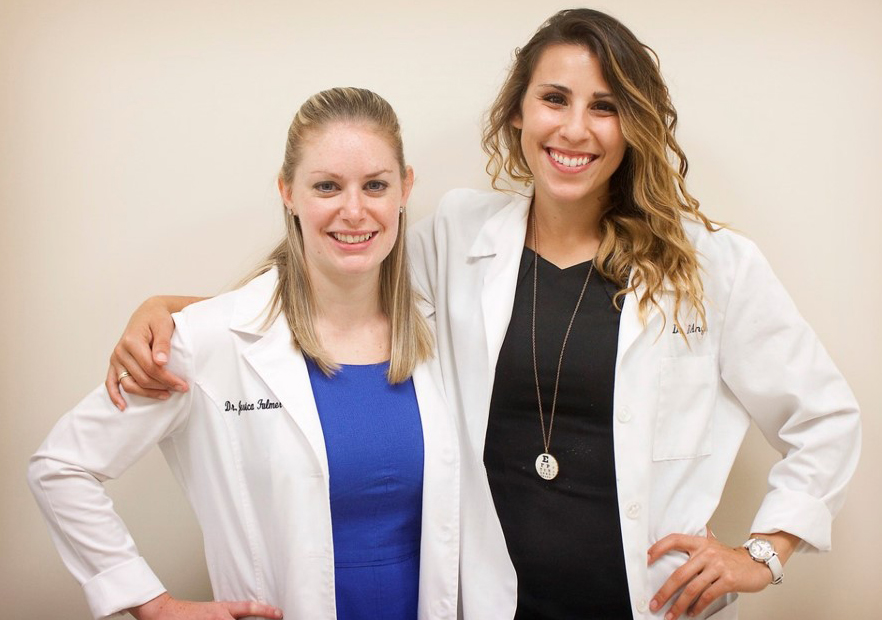
By Miki Lyn Zilnicki, OD, FCOVD,
and Jessica Licausi, OD, FAAO, FCOVD
July 28, 2021
Staying connected to your patients is never easy, and it became a lot harder during the pandemic when many avoided face-to-face contact. Fortunately, our practice already had a way of staying connected that goes beyond our regular social media postings and updating of our practice website. We have a weekly podcast that our current patients listen to, and which also alerts prospective patients to our services and helps us make professional connections.
Why Launch a Podcast?
We launched our podcast, “Vision is More than 20/20,” at the end of 2019. Dr. Zilnicki took the reins on the launch while Dr. Licausi was out on maternity leave. At the end of 2019/early 2020, we had babies 3.5 weeks apart! The podcast was a great way for us to stay connected to each other and the community during our overlapping leaves. It was a project that had been on our to-do docket for a while.
Then the onset of the COVID-19 pandemic, and resultant slowing down of our office, allowed us additional time to dedicate to growing and developing this passion project. Our goal with the podcast is to bring awareness that “vision” means SO much more than having “20/20” visual acuity. We aim to educate listeners on all the pieces of the visual system and highlight the importance of visual function.
How Much Does it Cost?
Starting a podcast can be done at a low cost, especially if you are willing to do most of the work yourself. We recommend following Pat Flynn online. We watched a free, three-part series from Flynn, “How to Start a Podcast,” which helped us take the first steps.
We utilize the platform, Buzzsprout, to upload the podcast to our social media sites. It only costs $12 monthly. This platform also tracks all our listener demographics for us.
Another cost is equipment. We initially used standard headphones for recording, but quickly decided that better audio quality was important to us and an investment worth making. We tried several different set-ups between plug-in microphones and headsets. We found the best audio quality using a wired headset with a noise-cancelling microphone attached, which cost us each $130.
Initially we recorded over Skype and paid $32.58 for a recording service called Amolto that would automatically record our Skype conversations. During the pandemic, Zoom really took off and we realized it was an easier platform to utilize, and it would be at no cost as our recordings rarely go over 40 minutes (this is the time limit set by Zoom before you have to pay for the “pro” version).
We edit our podcasts using a free software program called Audacity. Dr. Zilnicki is our editing/technical guru and handles all the editing and posting of the podcast herself. That said, the bigger investment compared to money is our time. We have an ongoing conversation that if this ever becomes too burdensome for Dr. Zilnicki to continue doing that, we will look into outsourcing some of the technical work. One platform we looked into for possible future use has editing packages starting at $349 per month.
How Often Do You Record?
We plan/record/post an episode each week. Prepping the episode includes selecting a topic idea, scheduling a guest if needed and creating an outline. We record the episodes over Zoom and send any guests the associated meeting link and show notes prior to the episode. Post-recording Dr. Zilnicki has to convert the audio files through a software on her phone called AudioConvert to MP3 files. Then she edits the episode, uploads it to Buzzsprout, plans the scheduled post and creates social media posts accordingly. This process usually takes 1-2 hours per week depending on the length of the episode and how much editing is required.
Other Articles to Explore
What Do You Talk About on the Podcasts?
Since we own a vision therapy practice, the beginning of the podcast focused heavily on what vision therapy is and the specialties within it. Since then we have run several series, including a pediatrics series, sports vision series and currently an ocular health series.
We keep a running list between the two of us of future episode ideas and update as topics come to us. We try to think of what someone would be curious about related to their eyes and would be interested in learning about. Our other favorite topic idea is to pick something that is a common myth and debunk it for listeners.
Create a Connection to Both Patients & Healthcare Community
We average around 100 listeners per podcast episode. Listeners come from all over the world, with the densest population of listeners in North America. Listeners are a fairly even mix of patients and optometrists/other healthcare professionals.
From a professional standpoint, the podcast has been wonderful to connect with not only optometric colleagues, but other medical professionals as well as different professions. We absolutely love connecting with all different people on their expertise and sharing with our listeners how vision is connected to every part of the body and what we do throughout the day.
From a patient standpoint, it carries weight with new patients that we are putting out information every week. It is a great tool to utilize when speaking with a parent about vision and vision therapy, our specialty, and to be able to say, “We recorded a podcast on this subject that goes into great depth. I’ll send you the link to have you listen.” We have gotten such great feedback from patients and parents about how our podcasts helped them learn more about vision and what we do!
Boost Patient Education
During the height of the pandemic, when the office was closed, the podcast was definitely a way we stayed connected to our current patients. More recently we connected with a dentist from Florida, who suffered a concussion and stumbled upon our podcast. He reached out to see if we could recommend a vision therapy provider in his area because listening to our podcast gave him hope that there were treatment options available to him that his current doctor wasn’t offering.
Give It a Try
Our biggest piece of advice is that if you want to start a podcast- just do it! Your first episode may not be great, but start talking and recording. It’s scary to put yourself out there, but if you put out good content your following will grow organically! Podcasts have grown into a substantial media outlet, and are a great avenue for sharing your knowledge beyond your local community.
 Miki Lyn Zilnicki, OD, FCOVD, and Jessica
Miki Lyn Zilnicki, OD, FCOVD, and Jessica
Licausi, OD, FAAO, FCOVD, are co-owners of Twin Forks Optometry and Vision Therapy in Riverhead, NY.
To contact Dr. Zilnicki: DrZilnicki@twinforksoptometry.com.
To contact Dr. Licausi: DrLicausi@twinforksoptometry.com





















